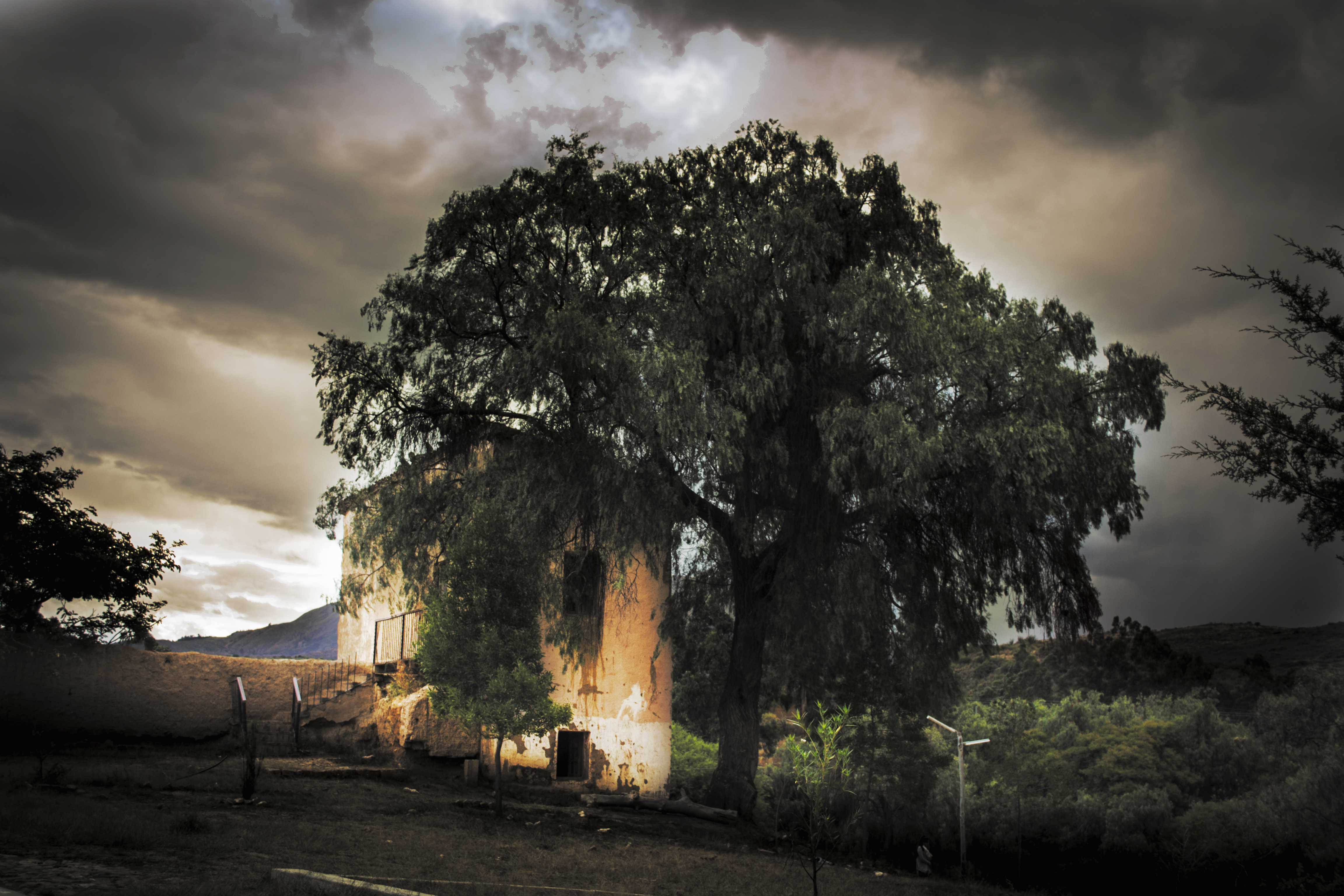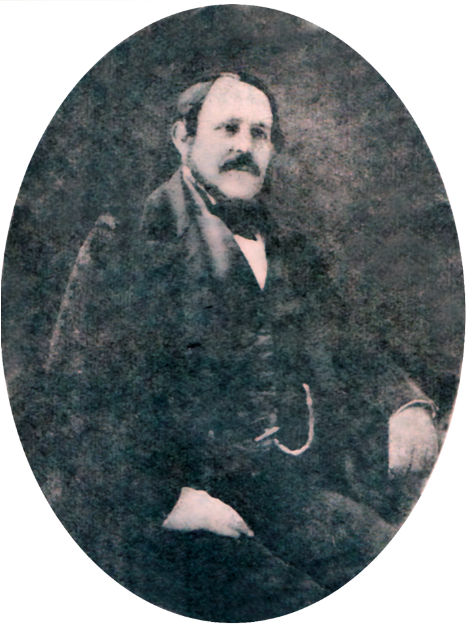|
Mariano Melgarejo
Manuel Mariano Melgarejo Valencia (13 April 1820 – 23 November 1871) was a Bolivian military officer and politician who served as the fifteenth president of Bolivia from December 28, 1864, until his fall on January 15, 1871. He assumed power in 1864 after staging a coup d'état against president José María de Achá, thus beginning six-year dictatorship, popularly known as the ''Sexenio''. He would cement his power after personally killing former president Manuel Isidoro Belzu in 1865. He was of controversial personality and his dictatorship is remembered in Bolivia mainly for its poor government administration and its abuses against the indigenous population, in addition to having signed unfavorable border treaties with Chile and Brazil in 1866 and 1867, which proved to be devastating in coming years. On January 15, 1871, the Commander-in-Chief of the Army at the time, General Agustín Morales, along with the support of the people of La Paz, tired of the president's desp ... [...More Info...] [...Related Items...] OR: [Wikipedia] [Google] [Baidu] |
José María De Achá
José María de Achá Valiente (8 July 1810 – 29 January 1868) was a Bolivian general who served as the 14th president of Bolivia from 1861 to 1864. He served in the battles of the Peru-Bolivian Confederation and conspired against longtime dictator Manuel Isidoro Belzu (1848–55). Later, he was appointed Minister of War in the cabinet of another dictator, José María Linares (1857–61). In that capacity, he led the 1861 coup d'état that toppled Linares. Originally he governed as head of Junta, and then as sole leader of the revolutionary government but became constitutional president via elections. He was himself overthrown in the 1864 military coup carried out by General Mariano Melgarejo. Early military and political activity De Achá was born in the city of Cochabamba on 8 July 1810. He enlisted in the Bolivian army, since a military career was promising at the time. He took part in the War of the Confederation and in the Peru-Bolivia War in 1841. He also fought ... [...More Info...] [...Related Items...] OR: [Wikipedia] [Google] [Baidu] |
Chile
Chile, officially the Republic of Chile, is a country in western South America. It is the southernmost country in the world and the closest to Antarctica, stretching along a narrow strip of land between the Andes, Andes Mountains and the Pacific Ocean. Chile had a population of 17.5 million as of the latest census in 2017 and has a territorial area of , sharing borders with Peru to the north, Bolivia to the northeast, Argentina to the east, and the Drake Passage to the south. The country also controls several Pacific islands, including Juan Fernández Islands, Juan Fernández, Isla Salas y Gómez, Desventuradas Islands, Desventuradas, and Easter Island, and claims about of Antarctica as the Chilean Antarctic Territory. The capital and largest city of Chile is Santiago, and the national language is Spanish language, Spanish. Conquest of Chile, Spain conquered and colonized the region in the mid-16th century, replacing Incas in Central Chile, Inca rule; however, they Arauco War ... [...More Info...] [...Related Items...] OR: [Wikipedia] [Google] [Baidu] |
Sergeant
Sergeant (Sgt) is a Military rank, rank in use by the armed forces of many countries. It is also a police rank in some police services. The alternative spelling, ''serjeant'', is used in The Rifles and in other units that draw their heritage from the British light infantry. The word "sergeant" derives from the Latin , 'one who serves', through the Old French term . In modern hierarchies the term ''sergeant'' refers to a non-commissioned officer positioned above the rank of a corporal, and to a police officer immediately below a lieutenant in the US, and below an inspector in the UK. In most armies, the rank of sergeant corresponds to command of a team/section (military unit), section, or squad. In Commonwealth of Nations, Commonwealth armies, it is a more senior rank, corresponding roughly to a platoon second-in-command. In the United States Army, sergeant is a more junior rank corresponding to a fireteam leader or assistant squad-leader; while in the United States Marine Corps ... [...More Info...] [...Related Items...] OR: [Wikipedia] [Google] [Baidu] |
Soldier
A soldier is a person who is a member of an army. A soldier can be a Conscription, conscripted or volunteer Enlisted rank, enlisted person, a non-commissioned officer, a warrant officer, or an Officer (armed forces), officer. Etymology The word ''soldier'' derives from the Middle English word , from Old French or , meaning mercenary, from , meaning shilling's worth or wage, from or , shilling. The word is also related to the Medieval Latin , meaning soldier (). These words ultimately derive from the Late Latin word , referring to an Ancient Rome, ancient Roman coin used in the Byzantine Empire. Occupational and other designations In most armies, the word "soldier" has a general meaning that refers to all members of an army, distinct from more specialized military occupations that require different areas of knowledge and skill sets. "Soldiers" may be referred to by titles, names, Nickname, nicknames, or Acronym, acronyms that reflect an individual's military occupation spec ... [...More Info...] [...Related Items...] OR: [Wikipedia] [Google] [Baidu] |
Batalla De Ingavi
Batalla is a Spanish word, meaning "battle". It is also used as a surname (that originated in Spain as well). Notable people with the surname include: *Francesc Badia i Batalla (1923–2020), Andorran public servant *Hugo Batalla (1926–1998), Uruguayan politician, Vice President 1995–98 *Pablo Batalla (born 1984), Turkish football player *Perla Batalla, Mexican-American singer-songwriter *Rick Batalla (born 1962), actor and playwright Other *Battaglia (music), musical depictions of battle cultivated in Spain chiefly as a keyboard genre by organist-composers. See also *Un Paso Mas En La Batalla V8 was an Argentine heavy metal band formed in 1979, one of the first notable Argentine and Latin America bands of that genre. After its dissolution former members have continued their careers starting other heavy metal bands, Hermética, Ho ..., studio album by V8 {{surname es:Batalla ... [...More Info...] [...Related Items...] OR: [Wikipedia] [Google] [Baidu] |
José Ballivián
José Ballivián Segurola (5 May 1805 – 6 October 1852) was a Bolivian general during the Peruvian-Bolivian War. He also served as the ninth president of Bolivia from 1841 to 1847. Early life Born in La Paz to wealthy parents, he was the nephew of Dámaso Bilbao la Vieja. Ballivián had a rather undistinguished military career until his elevation to the post of Commander of the Army in June 1841. He had been a royalist until 1822, but switched sides and joined Lanza's insurrectionist army at the age of 18. His advance in the Bolivian army was unremarkable, although his role was apparently fundamental to the Confederate triumph over Salaverry at the Battle of Socabaya in early 1836. Importantly, he had been a supporter of Santa Cruz in the 1830s. The Battle of Ingavi His golden hour came, and he rose dramatically to the occasion, when at aged 37 and as Bolivian Army chief he united the pro-Velasco and pro-Santa Cruz factions under his command to face-off a massive Peruvia ... [...More Info...] [...Related Items...] OR: [Wikipedia] [Google] [Baidu] |
Battle Of Ingavi
The Battle of Ingavi occurred on November 18, 1841, during the Peruvian–Bolivian War of 1841–42, in the town of Ingavi, Bolivia. The Bolivian Army, commanded by José Ballivián, there met an invading Peruvian Army commanded by Agustín Gamarra, who later died during the battle. Background With the dissolution of the Peru-Bolivian Confederation, Peruvian President Agustín Gamarra, made the controversial decision to invade Bolivia and used the political chaos occurring in the Bolivian government as an excuse. Gamarra had from the beginning supported a union between Peru and Bolivia but preferred it to be completely dominated by the Peruvian government, rather than being a confederation between the two nations. Immediately, |
Andrés De Santa Cruz
Andrés de Santa Cruz y Calahumana (; 30 November 1792 – 25 September 1865) was a Bolivian general and politician who served as interim president of Peru in 1827, the interim president of Peru from 1836 to 1838 and the sixth president of Bolivia from 1829 to 1839. He also served as Supreme Protector of the short-lived Peru-Bolivian Confederation from 1836 to 1839, a political entity created mainly by his personal endeavors. Early life and education Santa Cruz was born on 30 November 1792, in the town of Huarina, La Paz. His father was José Santa Cruz y Villavicencio, a Spaniard, and his mother Juana Basilia Calahumana, an Aymara woman from the town of Huarina. In later years, Andrés de Santa Cruz would claim that through his mother, he descended directly from Inca rulers. He began his studies in his hometown at the San Francisco Convent, and continued them at the San Antonio Abad Seminary in the city of Cuzco. In 1809 he left the seminary and returned to La Paz. M ... [...More Info...] [...Related Items...] OR: [Wikipedia] [Google] [Baidu] |
Cochabamba
Cochabamba (; ) is a city and municipality in central Bolivia in a valley in the Andes mountain range. It is the capital (political), capital of the Cochabamba Department and the list of cities in Bolivia, fourth largest city in Bolivia, with a population of 630,587 according to the 2012 Bolivian census. Its name is from a compound of the Quechua languages, Quechua words ''qucha'' "lake" and ''pampa'', "open plain." Residents of the city and the surrounding areas are commonly referred to as ''cochalas'' or, more formally, ''cochabambinos''. It is known as the "City of Eternal Spring" or "The Garden City" because of its spring-like temperatures all year round. It is also known as "La Llajta," which means "town" in Quechua. It is the largest urban center between the higher capital of La Paz and Santa Cruz de la Sierra in the tropical plains of the east. It sits south-west of the Tunari mountains, and north of the foothills of the Valle Alto. In antiquity, the area featured numero ... [...More Info...] [...Related Items...] OR: [Wikipedia] [Google] [Baidu] |
Viceroyalty Of Peru
The Viceroyalty of Peru (), officially known as the Kingdom of Peru (), was a Monarchy of Spain, Spanish imperial provincial administrative district, created in 1542, that originally contained modern-day Peru and most of the Spanish Empire in South America, governed from the capital of Lima. Along with the Viceroyalty of New Spain, Peru was one of two Spanish Viceroyalty, viceroyalties in the Americas from the sixteenth to the eighteenth centuries. The Spanish did not resist the Portuguese colonization of the Americas, Portuguese expansion of Brazil across the meridian established by the Treaty of Tordesillas. The treaty was rendered meaningless between 1580 and 1640 while Iberian Union, Spain controlled Portugal. The creation during the 18th century of the Viceroyalties of Viceroyalty of New Granada, New Granada and Viceroyalty of the Río de la Plata, Río de la Plata (at the expense of Peru's territory) reduced the importance of Lima and shifted the lucrative Andean trade t ... [...More Info...] [...Related Items...] OR: [Wikipedia] [Google] [Baidu] |




